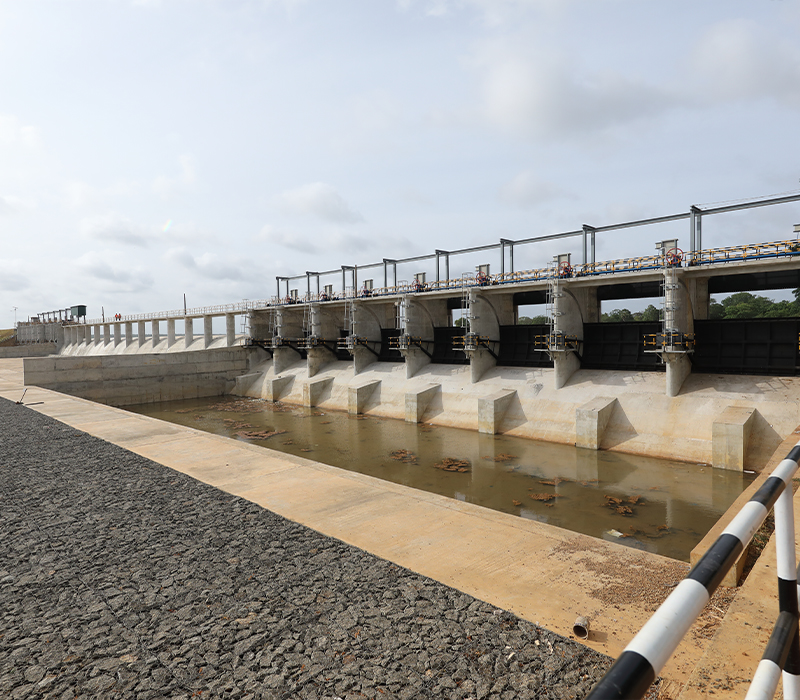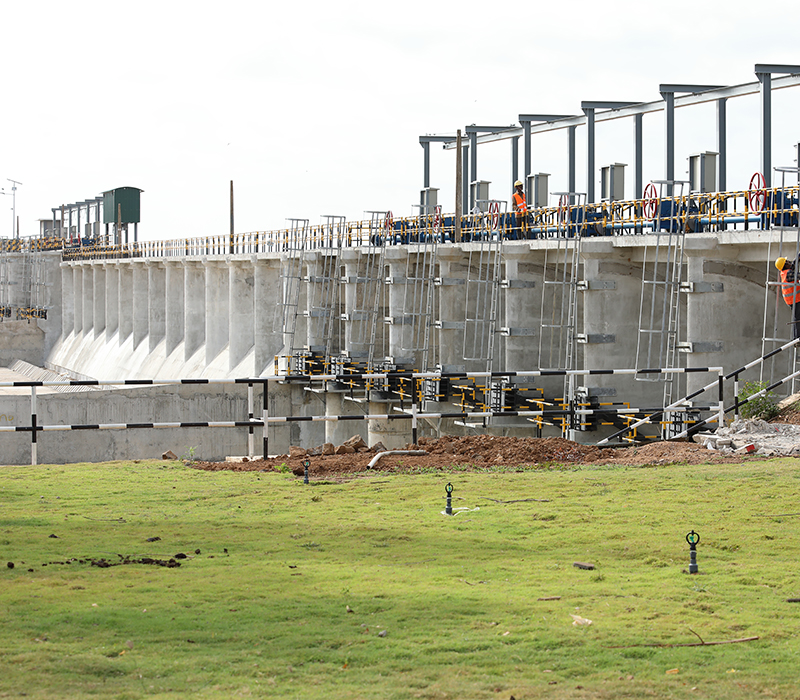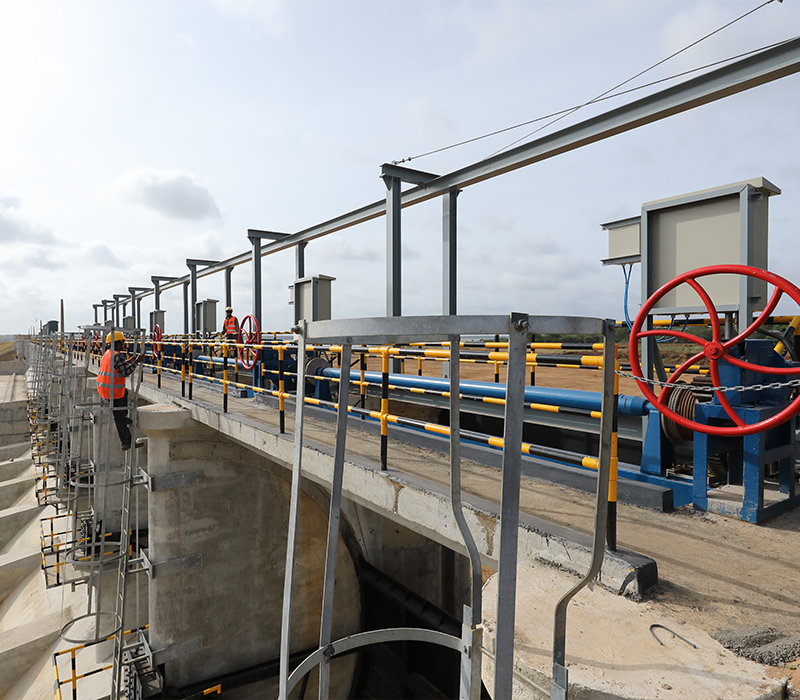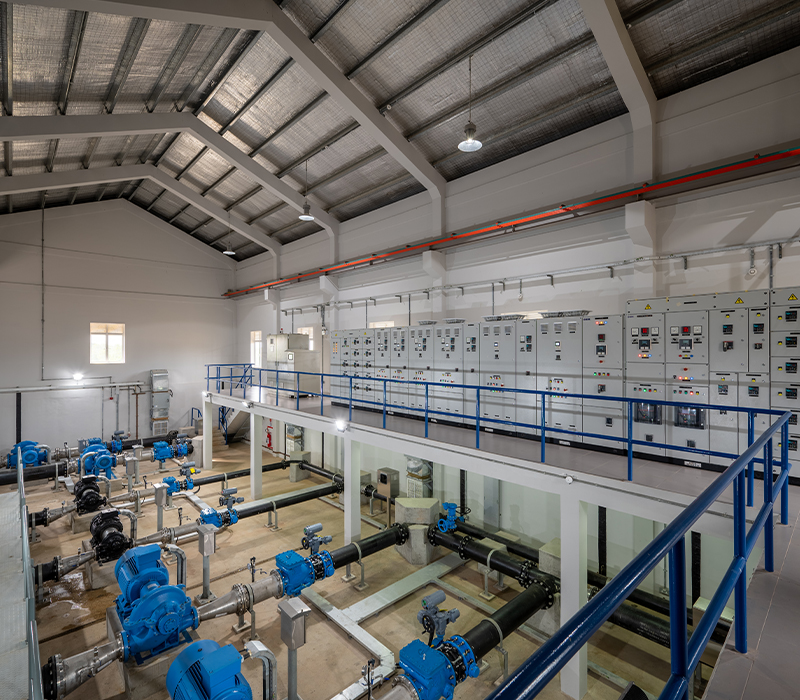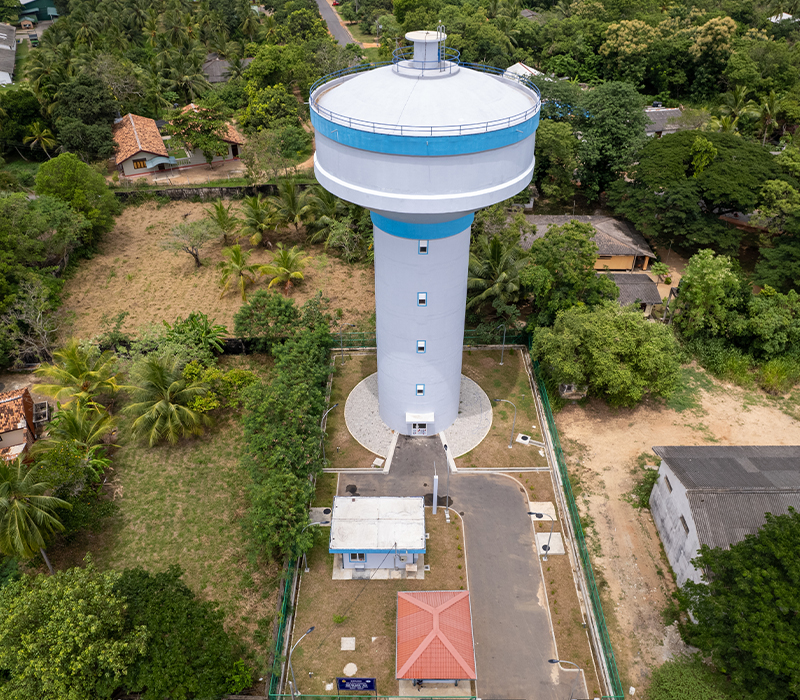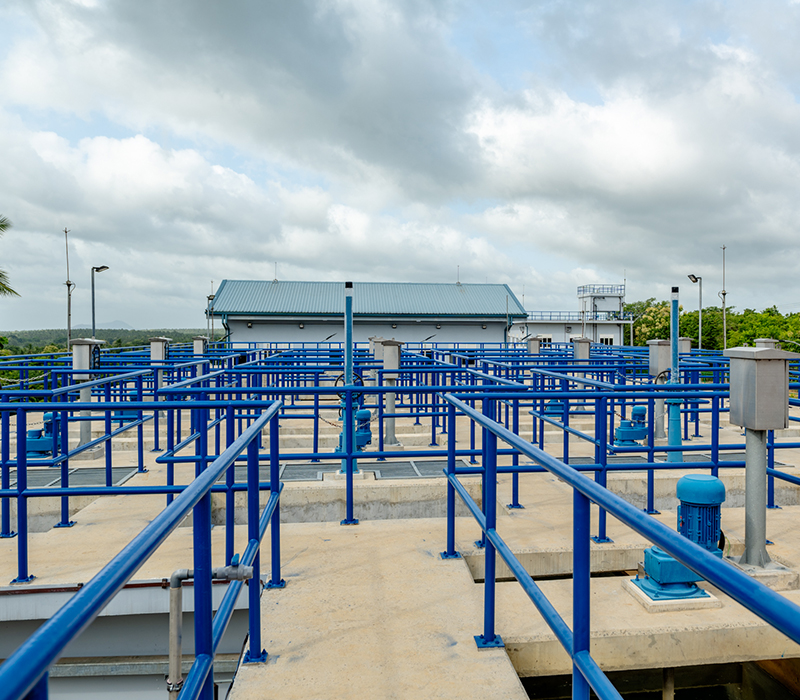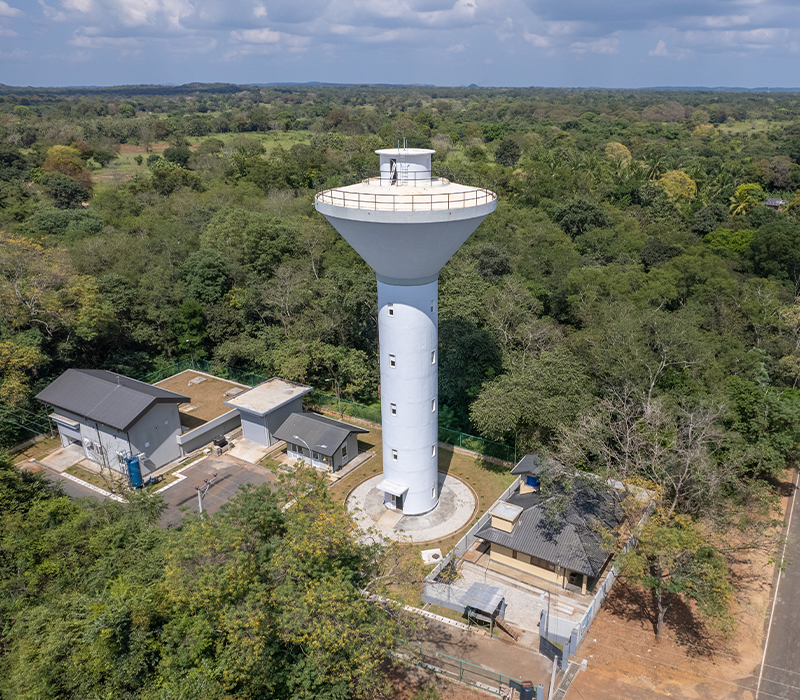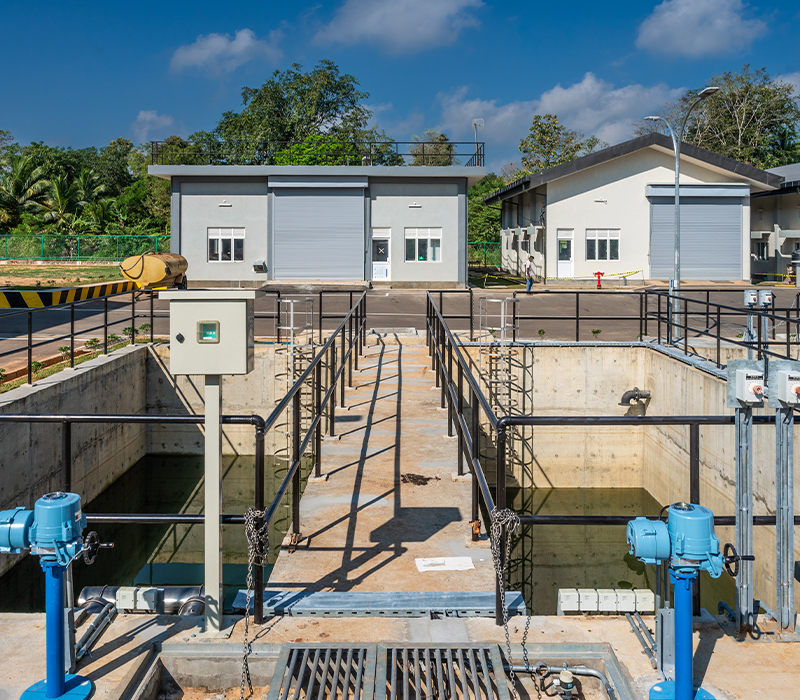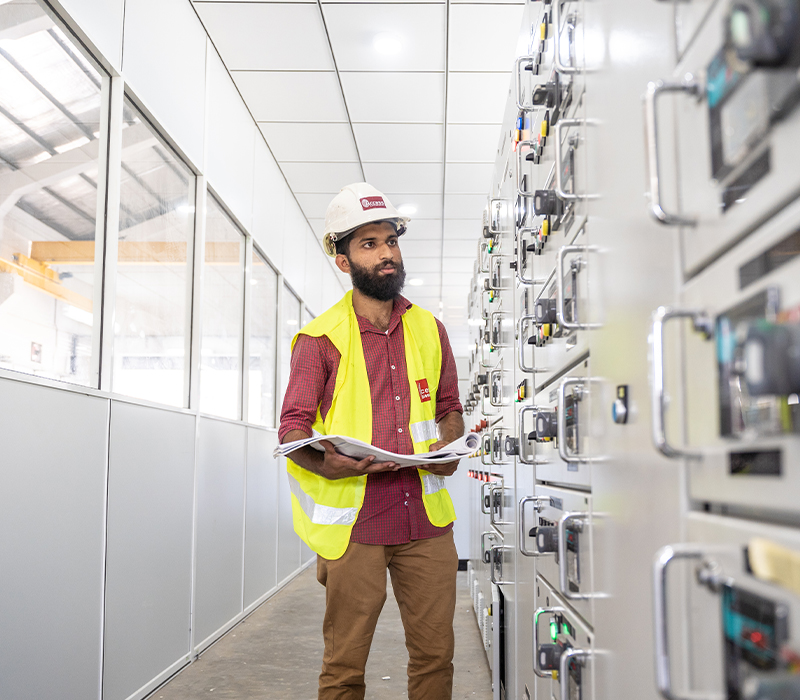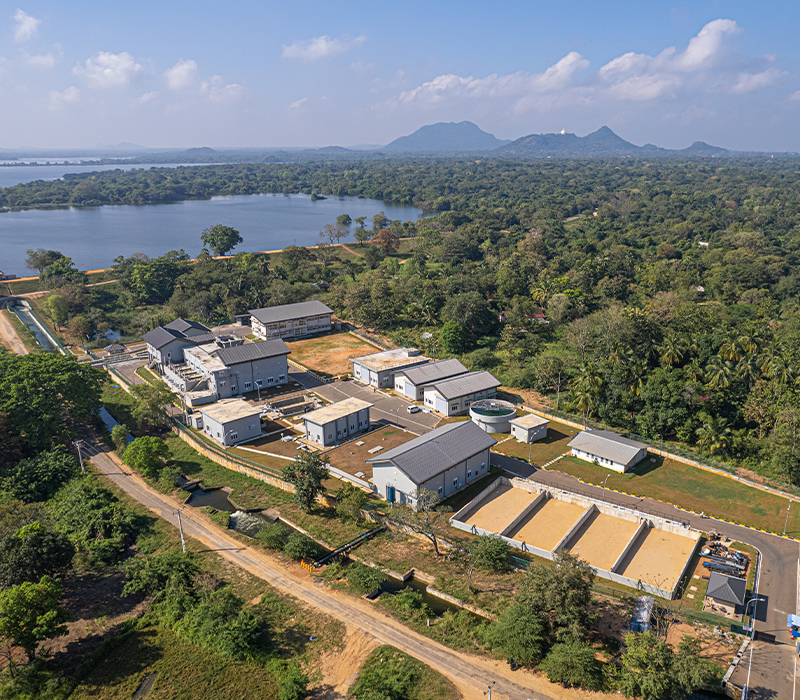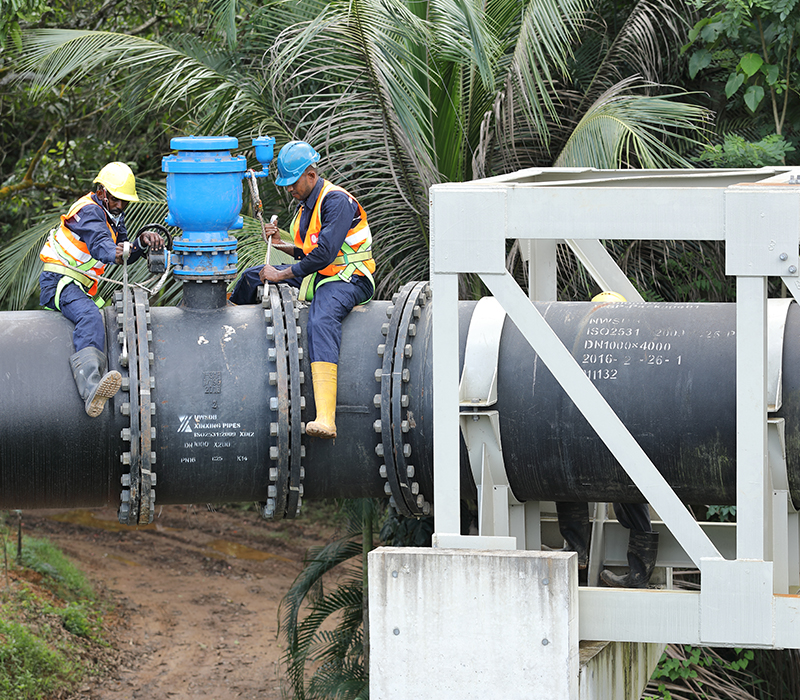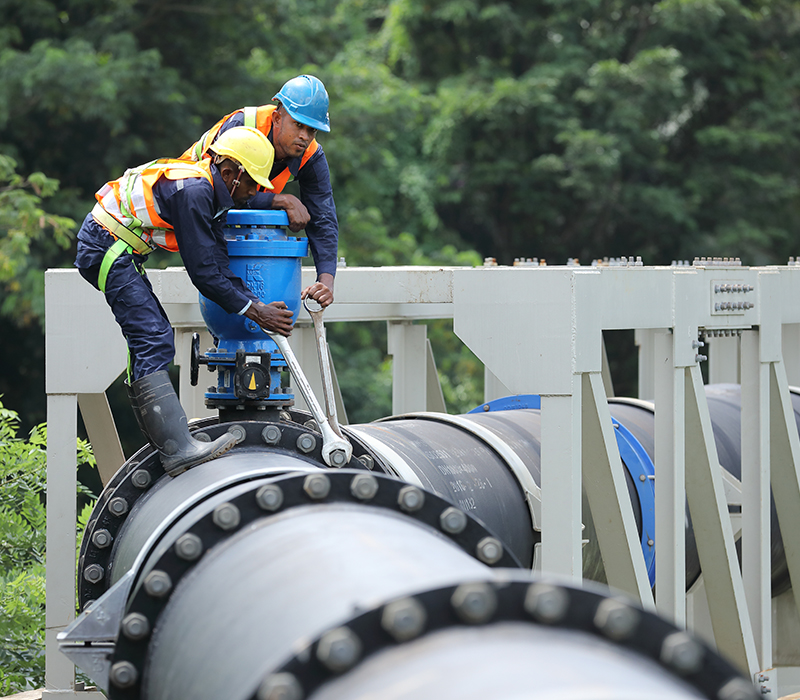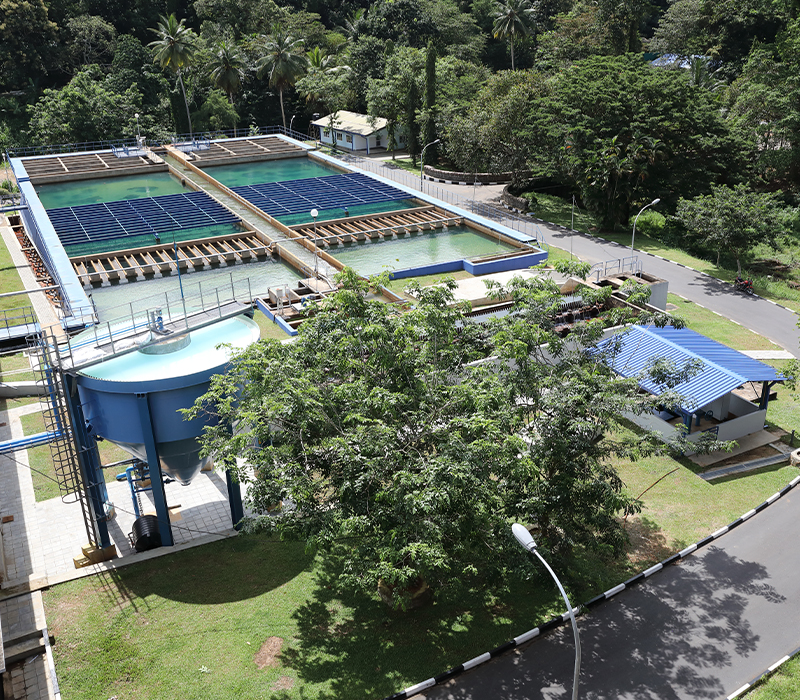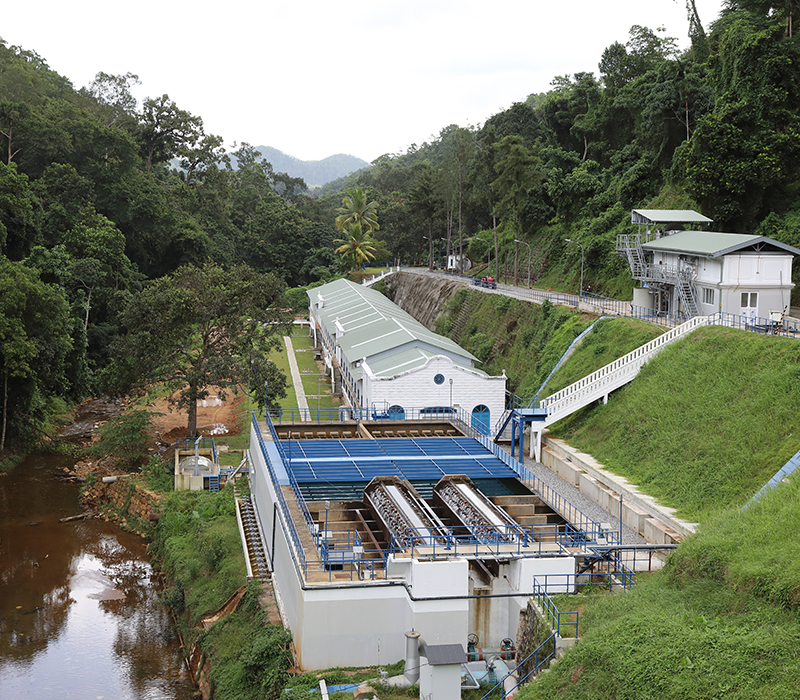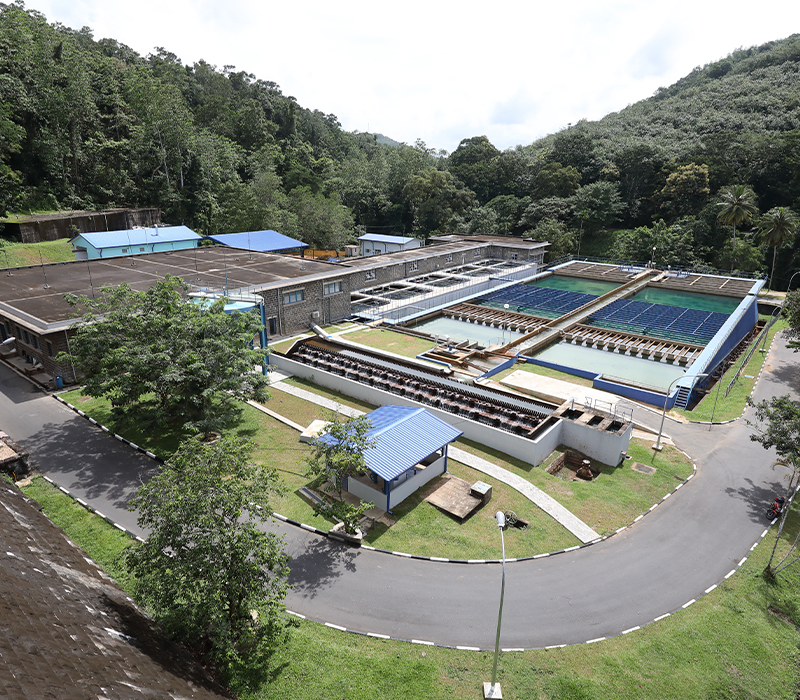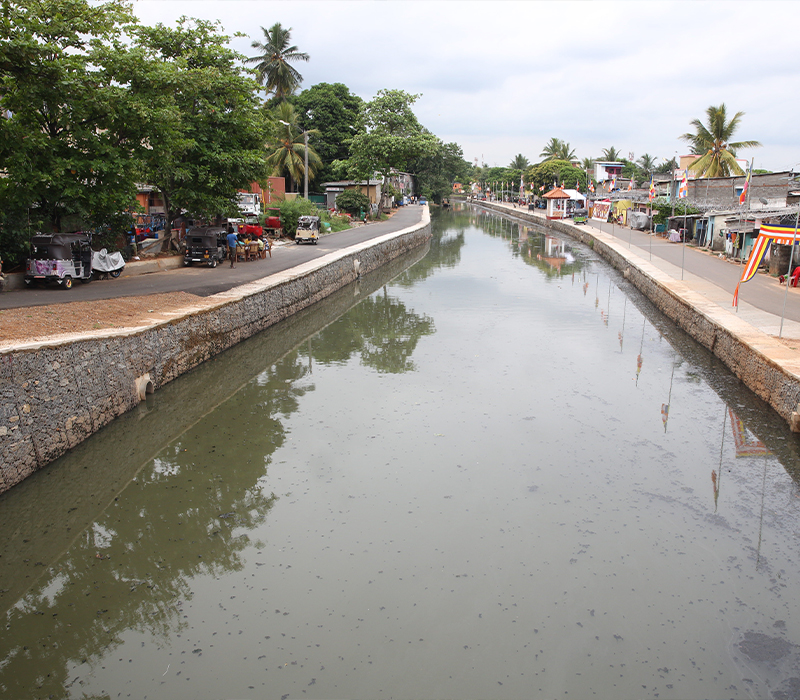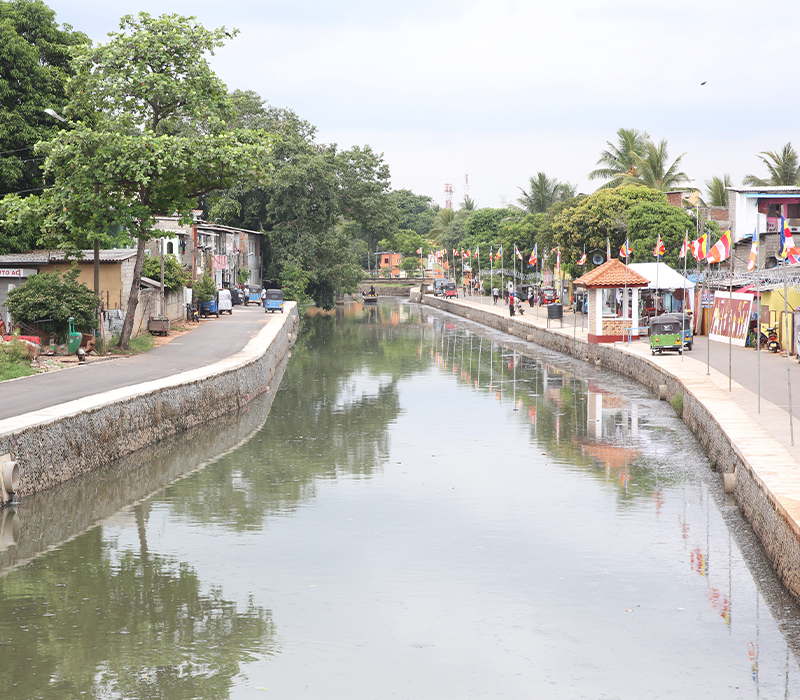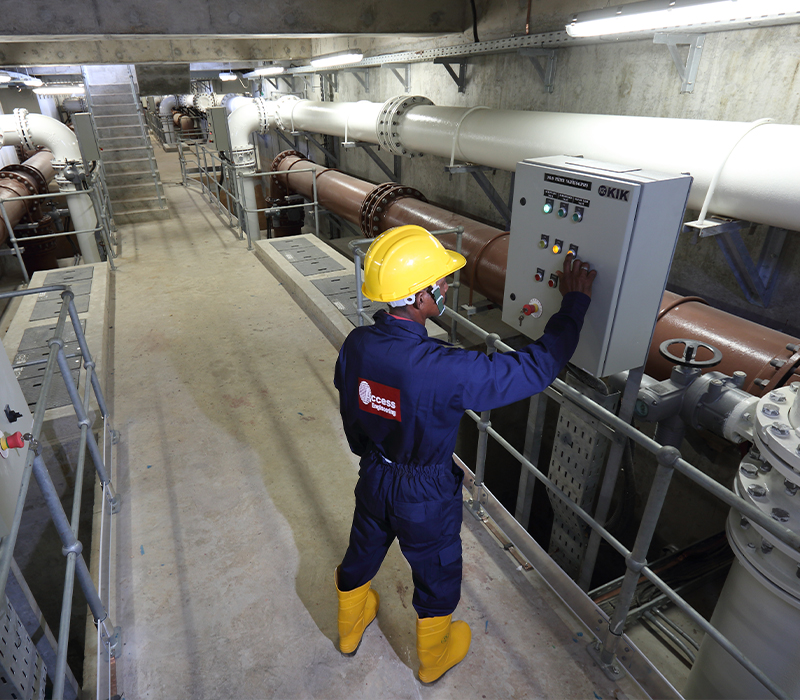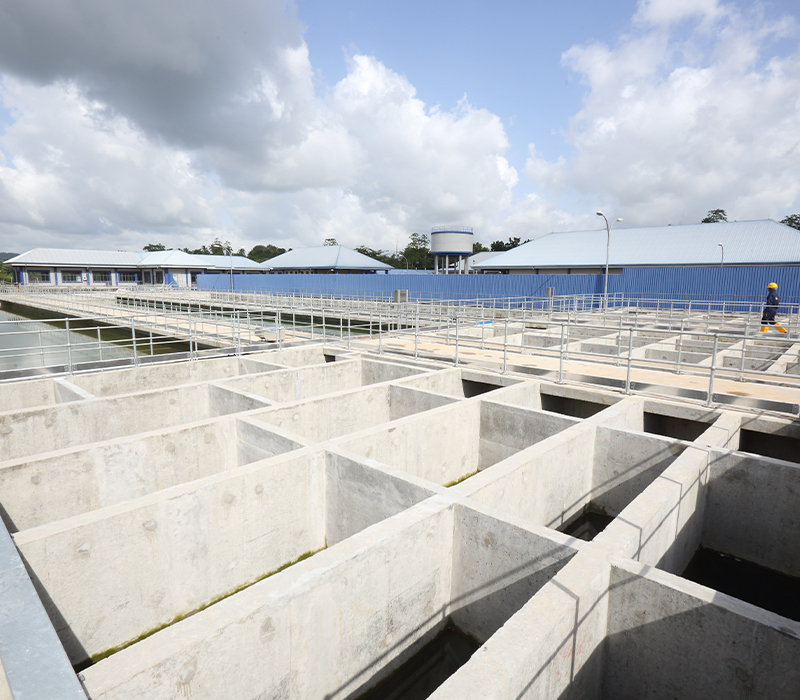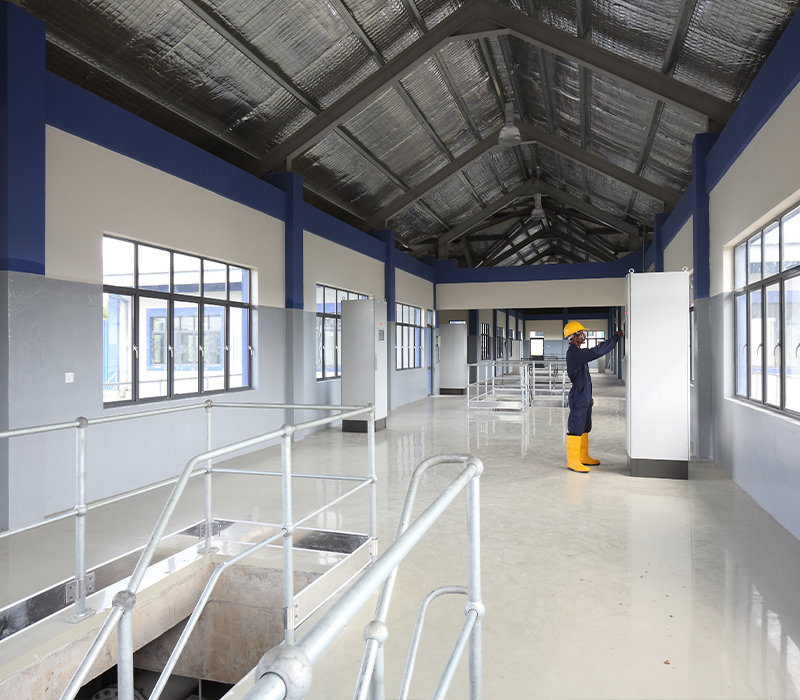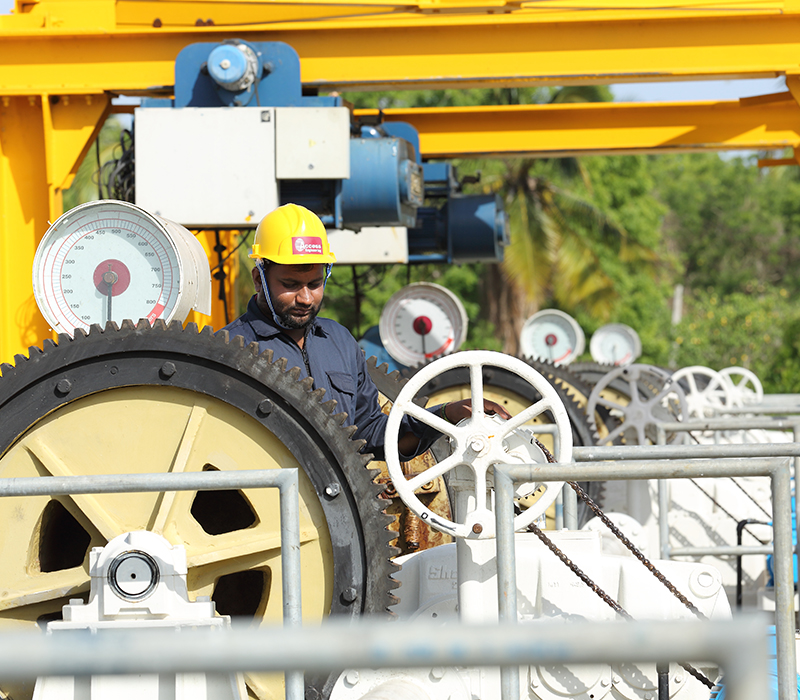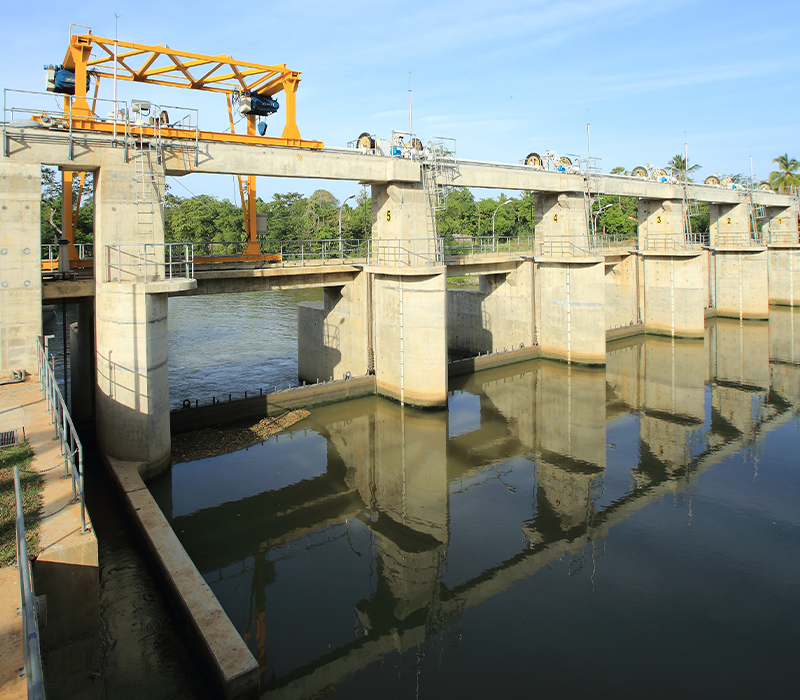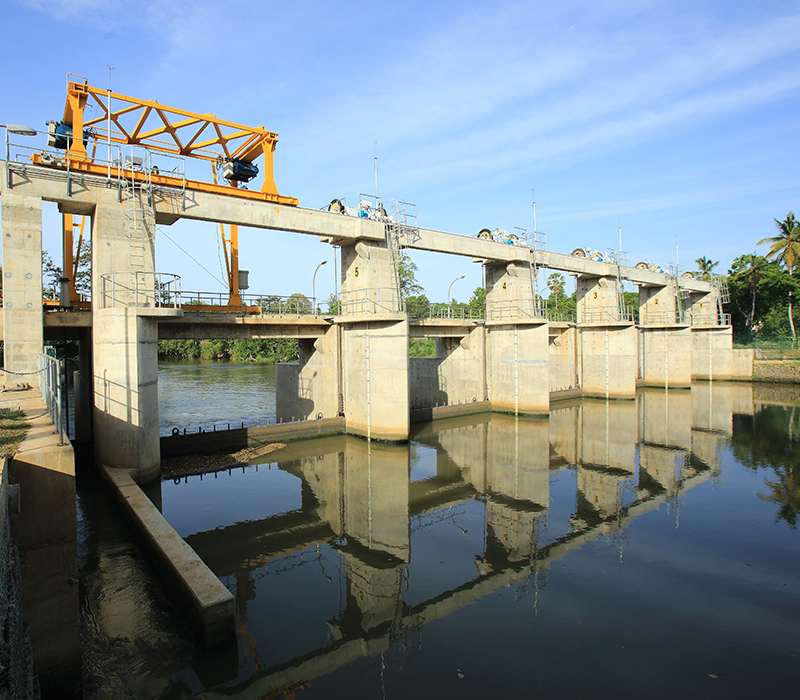REHABILITATION OF DOWNSTREAM AND UPSTREAM DAM EMBANKMENTS OF IRANAMADU RESERVOIR (PACKAGE I AND II)
The project which is financed by Asian Development Bank (ADB) International Fund for Agricultural Development (IFAD) was implemented under several packages. The Package I – rehabilitation of Downstream and Upstream Dam Embankments of Iranamadu Reservoir and Package II– Rehabilitation of Spillway, Supplying and Installation of New Radial Gates and Automation of Spill and Sluice Gates were awarded to Access Engineering PLC by Northern Provincial Council in respect for the corporate’s extensive experience and industry recognised expertise.
Deduruoya Water supply project
Recognizing the urgent requirement to control the growing threat of chronic diseases rapidly spreading across the areas of Nagollagama, Maho, and Polpithigama, the National Water Supply and Drainage Board spearheaded this project together with Kolon Global Corporation of Korea in order to provide safe drinking water to the surrounding communities.
A major part of the construction work was subcontracted to Access Engineering and the scope of works awarded included construction of an intake pump station (16,500 m3 /day capacity) at the left canal bank of Deduru Oya Reservoir, Potuwewa water treatment plant (15,000 m3 per day capacity), water towers at Maho (1,000 m3 capacity), and Nagollagama (750 m3 capacity) and laying of 500 mm diameter 3.5 km long raw water main DI pipeline, laying of 26 km long clear water transmission line, and installation of distribution network for 164 km of diameters by 100 mm – 300 mm (PVC and HDPE)
Anuradhapura North water supply project (phase 1)
The project was implemented by the National Water Supply and Drainage Board with the funds provided by Japan International Corporation Agency (JICA). The objective of the project was to construct a water supply system to provide safe drinking water and increase water supply coverage in the Anuradhapura North region – an area that has shown a high prevalence of CKD (Chronic Kidney Disease) among its population. The project is expected to benefit around 75,000 people across 30 Grama Niladhari (GN) divisions in six Divisional Secretariat (DS) Divisions – Mahakanadarawewa, Rambewa, Medawachchiya, Isinbassagala, Ethakada, Pihimbiyagollawa (East Rambewa). The scope of the project also included the construction of an intake facility, flow control structures, water treatment plants, three ground reservoirs, four elevated water towers, and associated building works and electro-mechanical works.
Towns East of Colombo District water supply project (Phase 1)
The Towns East of Colombo District Water Supply Project was implemented by the National Water Supply and Drainage Board and with the funds from local banks. A total of 116 Sq km area which includes 40 Grama Niladhari Divisions under Seethawaka, Padukka, and Horana Divisional Secretariat Divisions was covered by the project. The project scope was to supply pipe borne water to an estimated population of 373,000 in the eastern part of the Colombo District, implemented through three contract packages. The contract Package I which was awarded to Access Engineering PLC included; supply and laying of 1000 mm diameter DI transmission pipes for a length of 4 km from Meepe to Meegoda and HDPE pipes of variable diameter as distribution mains for a length of 200 km.
Rehabilitation of Labugama and Kalatuwawa Water treatment plants
The designed capacity of Labugama (WTP) which was 60,000 m3 /day and Kalatuwawa (WTP) which was 90,000 m3 /day have been operationally reduced by 30% due to the severe deterioration that has occurred over the years.
Our scope of the work included the renovation and replacement of existing filters and clarifiers, intake well improvements, modification of aerators and other process structures, reconstruction and renovation of existing buildings, internal roads and site work, etc. The rehabilitation was targeted to bring the plants up to the original capacity.
CONSTRUCTION OF CANAL BANK PROTECTION WORKS OF ST. SEBASTIAN SOUTH CANAL (BELOW 500MN)
The canal bank revetment works in St. Sebastian South Canal is spearheaded by Sri Lanka Land Reclamation and Development Corporation under the guidance of Ministry of Megapolis and Western Region Development with the objective of flood control in the vicinity of St. Sebastian South Canal by dredging the canal and protecting its banks using gabion walls and steel sheet pile walls which prevent erosion of the banks.
St. Sebastian South Canal, with an approximate length of 2.0 km and a width of 15 m, is one of the key storm water drainage canals in the Northern Colombo area that discharges storm water in the Colombo basin into the Kelani River. Some stretches of the canal bank had been protected earlier either by gabion walls and sheet pile walls, but the rest of the earthen bank has not been protected resulting in the canal sections with undefined cross sections being difficult to maintain.
The scope of the project includes canal bank protection work of around 6,000 m3 of gabion construction works, 90 m long sheet piling work and reinstatement of existing access road and storm water drains disturbed by construction work.
Kalu Ganga water supply project Kandana water treatment plant extension
Under this project, the treatment capacities of the plant and related facilities were expanded to enable it to supply 60,000 m3 /day of potable water which will cater to the needs of a total of 250,000 people living in Kesbewa, Piliyandala, Jamburaliya, Kumbuke and surrounding areas in outer southern parts of Greater Colombo.
The work of the project involved the construction of flocculation and sedimentation basins, installation of filtration units and all other civil, mechanical, electrical and Instrumentation Control Monitoring System (ICM) works, construction of concrete and asphalt paved access roads to the water treatment plant as well as construction of an engineering office for National Water Supply and Drainage Board.
Gated salinity barrier across Walawe River at Hambanthota
Water resources from the Walawe River are used for irrigation, power generation and drinking water in the Hambantota District. However, during the dry season, raw water abstraction from Walawe River intake is highly restricted due to low flow conditions and the intrusion of salinity. To deal with this problem, a gated salinity barrier was installed to prevent upstream saltwater intrusion and maintain water levels at >1m above mean sea level during dry spells. The project also enhances raw-water extraction by 28,000m3 /day, meeting projected demand in the Hambantota District until 2025.
The barrier consists of an 18.7m-wide reinforced-concrete base across the river, six reinforced-concrete piers and two abutment walls. Five vertical wheel gates with hoist mechanisms have been installed, together with one sluice gate and a gantry crane. The scope also covered the installation of a riverbed protection system, construction of upstream and downstream embankment protection walls, and landscaping.
